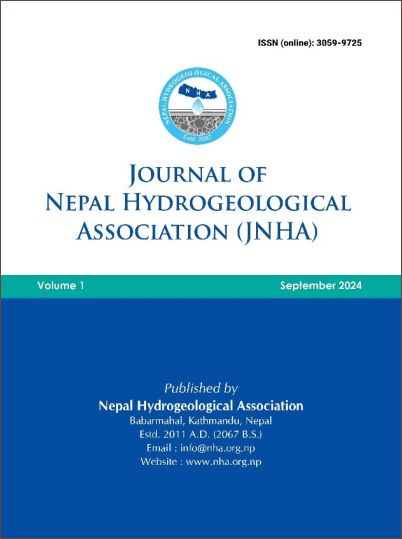Hydrogeological studies in the Western part of Banke District, Nepal (Province 5)
DOI:
https://doi.org/10.3126/jnha.v1i1.78221Keywords:
Hydrogeology, Hydro stratigraphy, Transmissivity, Yield, SpringsAbstract
Study of subsurface geology, aquifer system, thickness of hydro stratigraphic units, potential area based on transmissivity and yield, flow direction of groundwater of the western part of Banke District was carried out covering the area of 616.15 km². Lithological, hydrogeological and meteorological data maps, lithologs, static water level, precipitation, transmissivity, yield, springs etc. were carried out during desk study and field work. The study area consists of alluvial deposits of Pleistocene to Recent age derived from the Siwalik Hills and the mountains to the north and deposited by the Rapti River. Lithologically, the study area consists of clay, silt, sand and gravel. The cobbles, pebbles and somewhat boulders are also present. Geologically, the study area is located in Indo Gangetic Plain. The Indo Gangetic Plain is divided into Bhabar Zone and Terai Plain. Further the Terai Plain is divided into Middle Terai and Southern Terai. The Bhabar Zone is estimated of an area 68.83 km². Aquifers in the study area are confined types. The springs were found in the northern flat of the study area. Where the observed springs formed a line called spring line which is the southern boundary of Bhabar Zone and the base of Siwalik is northern boundary. The flow direction of ground water over the study area is towards the north.




